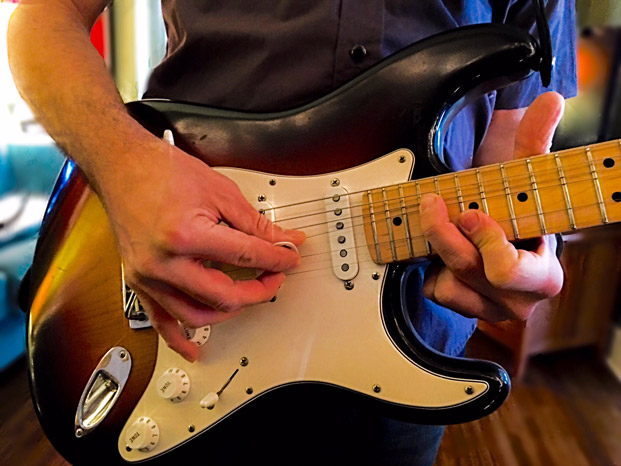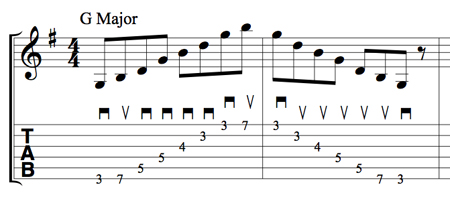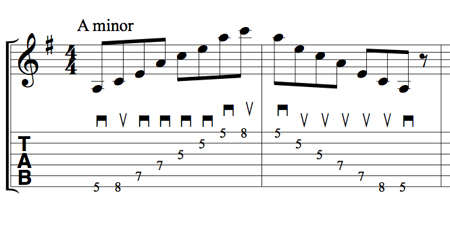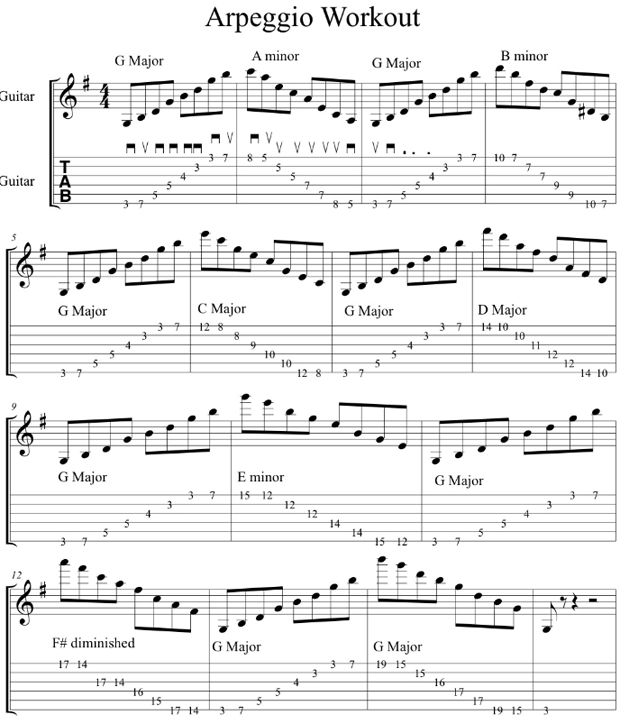Sweeping Arpeggio Workout: Navigating Chord Changes
This practice routine'll help you get from one chord to the next with ease.

So you’ve spent time learning some arpeggio shapes. Now what?
Arpeggios are a great musical tool that allow you to make melodic statements using harmonic (chordal) information.
When playing over chord changes, using arpeggios is the quickest way to navigate your way around them.
Learn as many shapes and voicings as you can, and plug them into this practice routine, which will help you get from one chord to the next with ease.
When I am practicing, whether reviewing scales, arpeggios and chords to simply keep my chops up, or attempting to get something new under my fingers, I like to practice in a key.
Giving your practice routines a musical context is a smart, practical habit to develop. For those who need a quick music theory review: When you harmonize a major scale, you end up with these chords: I (Major) - ii (minor) - iii (minor) - IV (Major) - V (Major/Dominant) - vi (minor) - vii (diminished).
The distance from one chord to the next gives us the formula for the major scale in increments of whole steps and half steps and is as follows: whole - whole - half - whole - whole - whole - half.
In this lesson, I am going to use six-string arpeggio shapes that are based on the very common barre chord shapes for major, minor, and diminished (EXAMPLE 1a-1c).


For this arpeggio workout, we will play in the key of G major. Start by ascending the I chord arpeggio, slide up the neck two frets and descend the ii chord arpeggio, then return to the I chord. Ascending the I chord again, when you finish, slide up four frets and descend the iii chord. Continue in this fashion, always starting on the I chord, and coming back via the next chord up in the key (EXAMPLE 2).

Once you have this routine under your fingers, try the same idea, but starting on the ii chord. Ascend the ii chord arpeggio, slide up two frets, and then descend the iii chord arpeggio, return to the ii chord, ascend it again, then slide up three frets to the IV chord, and descend it, and continue in the same fashion as before.
I suggest trying this for all seven chords, then try it out in a few different keys to get used to how the routine falls on the neck for each. This will surely make getting from one chord to another a breeze.
Guitarist Adrian Galysh is a solo artist and education coordinator for Guitar Center Studios. He's the author of the book Progressive Guitar Warmups and Exercises. For more information, visit him at AdrianGalysh.com.
Get The Pick Newsletter
All the latest guitar news, interviews, lessons, reviews, deals and more, direct to your inbox!









![Joe Bonamassa [left] wears a deep blue suit and polka-dotted shirt and plays his green refin Strat; the late Irish blues legend Rory Gallagher [right] screams and inflicts some punishment on his heavily worn number one Stratocaster.](https://cdn.mos.cms.futurecdn.net/cw28h7UBcTVfTLs7p7eiLe.jpg)
